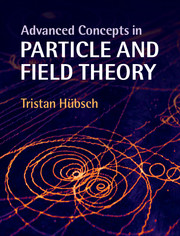Book contents
- Frontmatter
- Epigraph
- Contents
- Preface
- I Preliminaries
- II The Standard Model
- 3 Physics in spacetime
- 4 The quark model: combinatorics and groups
- 5 Gauge symmetries and interactions
- 6 Non-abelian gauge symmetries and interactions
- 7 The Standard Model
- III Beyond the Standard Model
- IV Appendices
- A Groups: structure and notation
- B A lexicon
- C A few more details
- References
- Index
4 - The quark model: combinatorics and groups
from II - The Standard Model
- Frontmatter
- Epigraph
- Contents
- Preface
- I Preliminaries
- II The Standard Model
- 3 Physics in spacetime
- 4 The quark model: combinatorics and groups
- 5 Gauge symmetries and interactions
- 6 Non-abelian gauge symmetries and interactions
- 7 The Standard Model
- III Beyond the Standard Model
- IV Appendices
- A Groups: structure and notation
- B A lexicon
- C A few more details
- References
- Index
Summary
The quark model was initially introduced to explain the emerging plethora of hadrons as bound states of quarks, and this is how we start with its study.
4.1 Bound states
Hadrons – mesons and baryons – are bound states of (anti-)quarks. Mesons are quark–antiquark bound states, held together by the strong nuclear force for which the mediating quanta (particles) are the gluons. Baryons consist of three quarks, bound by gluons. It is then clear that the three-particle bound states – baryons – are more complicated than mesons. Furthermore, even the description of mesons as bound states is hard in the case of the “light” quarks. For these one needs a relativistic description of bound states, which is considerably more complicated than the non-relativistic one, and needs more development. One can reliably discuss, using the methods of non-relativistic quantum theory, only the mesons consisting of the “heavier” quarks: the t-, b- and c-quarks and with less precision also the bound states with the s-quark.
The bound states may be analyzed in this way, as a non-relativistic system, if the mass of all constituents is sufficiently bigger than the binding energy. For example, the binding energy of the hydrogen atom (13.6 eV) is 2.66×10−5 times that of the electron rest energy, and 1.45×10−8 times the proton rest energy, so that the non-relativistic analysis of the hydrogen atom is very accurate. This analysis may then be adapted to many hadronic systems, and we first recall some of the important results about the hydrogen atom.
Unlike the hydrogen atom and the similar positronium, the bound states of quarks and antiquarks will additionally require combinatorial and group-theoretical results since, in addition to the electric charge and spin, quarks also have a “flavor” (u, d, c, s, b, t) and a “color” (red, yellow, blue).
- Type
- Chapter
- Information
- Advanced Concepts in Particle and Field Theory , pp. 127 - 164Publisher: Cambridge University PressPrint publication year: 2015

